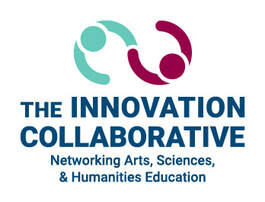Children’s STEM Books : |
Redefining STEM Literature |
By Juliana Texley, former NSTA President, a Collaborative Board Member, and member of the NSTA committee evaluating the Best STEM Books
National Science Teachers Association (NSTA) holds an annual competition at the intersections of STEM and humanities. It looks for the most interesting children’s books that promot important creative and inventive thinking skills in STEM areas. Below is a description of that competition and the results.
Children learn best when they are exploring authentic problems that are relevant to them and their communities. But today, children have less freedom to explore.
For 45 years, the National Science Teachers Association and the Children’s Book Council have worked together to identify the most Outstanding Science Trade Books for young scientists. But in the past few years, new questions have emerged. Science, Technology, Engineering and Mathematics are subjects in themselves. But STEM is more than that: it is a creative state of mind. STEM is naturally integrated, and includes arts, social studies and any other realm in which young learners can ask questions and solve problems.
So, last year NSTA convened a panel of technology, engineering, mathematics and science educators to redefine what the Best STEM Books might look like. Their conclusion: Subject matter content didn’t really matter. What was important was creativity, divergent thinking and the spirit of invention. STEM thinking might involve science or mathematics, but it might equally involve social studies or the arts.
A year of discussions resulted in a rubric. Publishers were invited to send books that illustrate an integrated approach to STEM thinking. In 2016, out of about 350 submissions, the panel identified about two dozen books that illustrated how creativity and ingenuity could work. The list included books about inventors, artists, and architects. It included stories about stubborn young “makers” and a crafty pirate with a plan! STEM had become not a collection of subjects, but a state of mind. To see the list of books selected for the first year, click here
In 2017, over 330 books were submitted and reviewed by a joint committee. Twenty-two books were selected for national recognition. They included music, architecture, art, and even coding skills without words or computers – all representing the best in integration. See them here
By Juliana Texley, former NSTA President, a Collaborative Board Member, and member of the NSTA committee evaluating the Best STEM Books
National Science Teachers Association (NSTA) holds an annual competition at the intersections of STEM and humanities. It looks for the most interesting children’s books that promot important creative and inventive thinking skills in STEM areas. Below is a description of that competition and the results.
Children learn best when they are exploring authentic problems that are relevant to them and their communities. But today, children have less freedom to explore.
For 45 years, the National Science Teachers Association and the Children’s Book Council have worked together to identify the most Outstanding Science Trade Books for young scientists. But in the past few years, new questions have emerged. Science, Technology, Engineering and Mathematics are subjects in themselves. But STEM is more than that: it is a creative state of mind. STEM is naturally integrated, and includes arts, social studies and any other realm in which young learners can ask questions and solve problems.
So, last year NSTA convened a panel of technology, engineering, mathematics and science educators to redefine what the Best STEM Books might look like. Their conclusion: Subject matter content didn’t really matter. What was important was creativity, divergent thinking and the spirit of invention. STEM thinking might involve science or mathematics, but it might equally involve social studies or the arts.
A year of discussions resulted in a rubric. Publishers were invited to send books that illustrate an integrated approach to STEM thinking. In 2016, out of about 350 submissions, the panel identified about two dozen books that illustrated how creativity and ingenuity could work. The list included books about inventors, artists, and architects. It included stories about stubborn young “makers” and a crafty pirate with a plan! STEM had become not a collection of subjects, but a state of mind. To see the list of books selected for the first year, click here
In 2017, over 330 books were submitted and reviewed by a joint committee. Twenty-two books were selected for national recognition. They included music, architecture, art, and even coding skills without words or computers – all representing the best in integration. See them here
